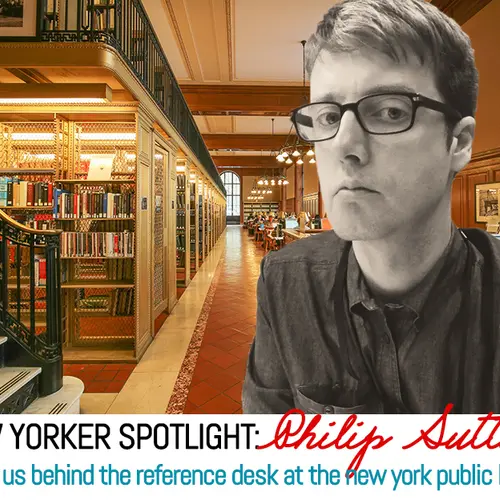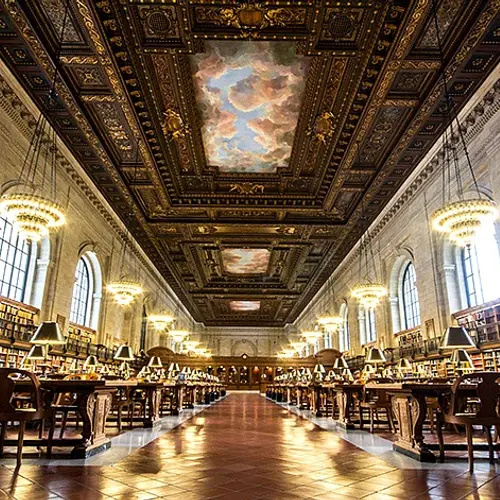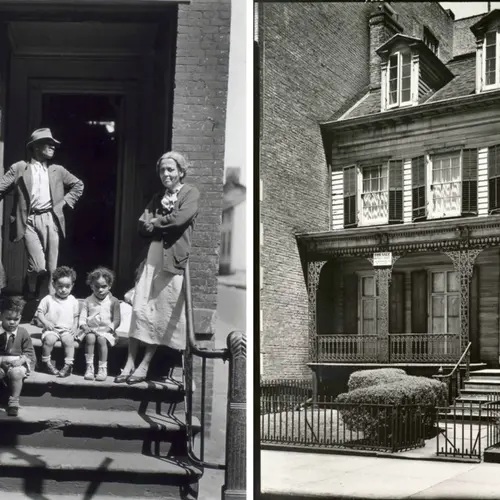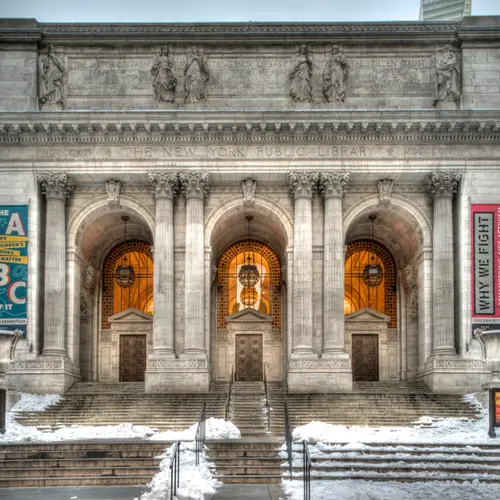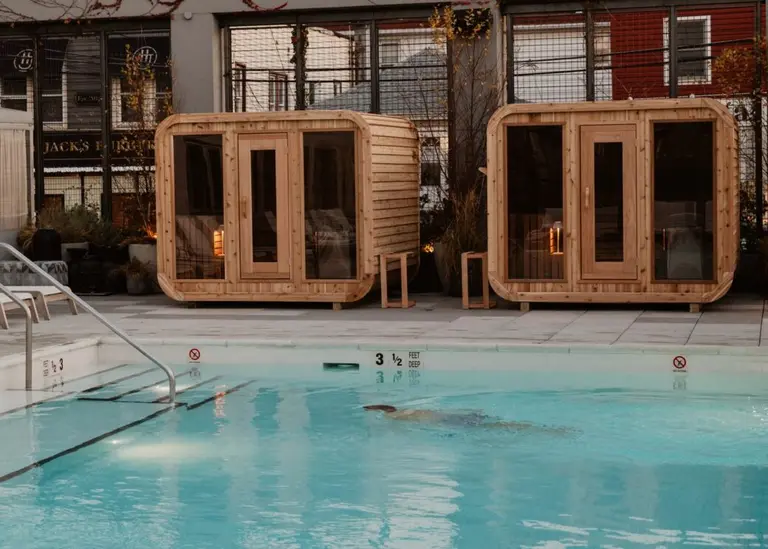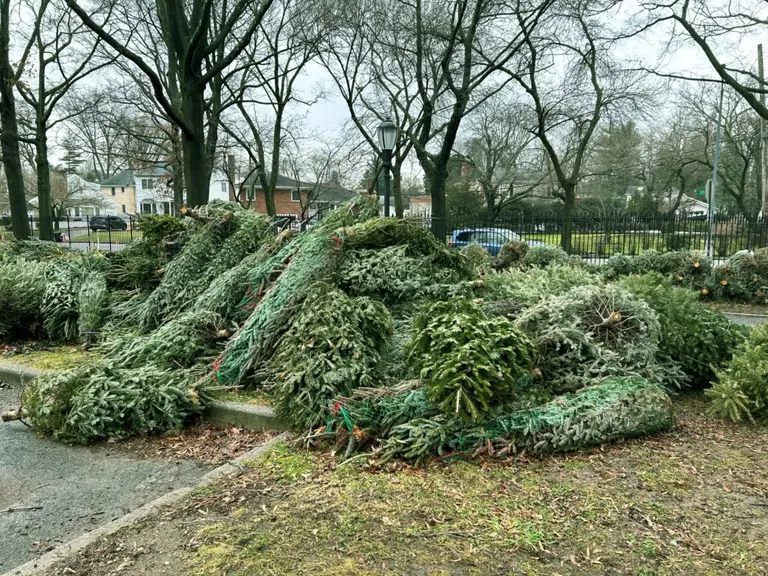New Yorker Spotlight: Behind the Reference Desk at the New York Public Library with Philip Sutton
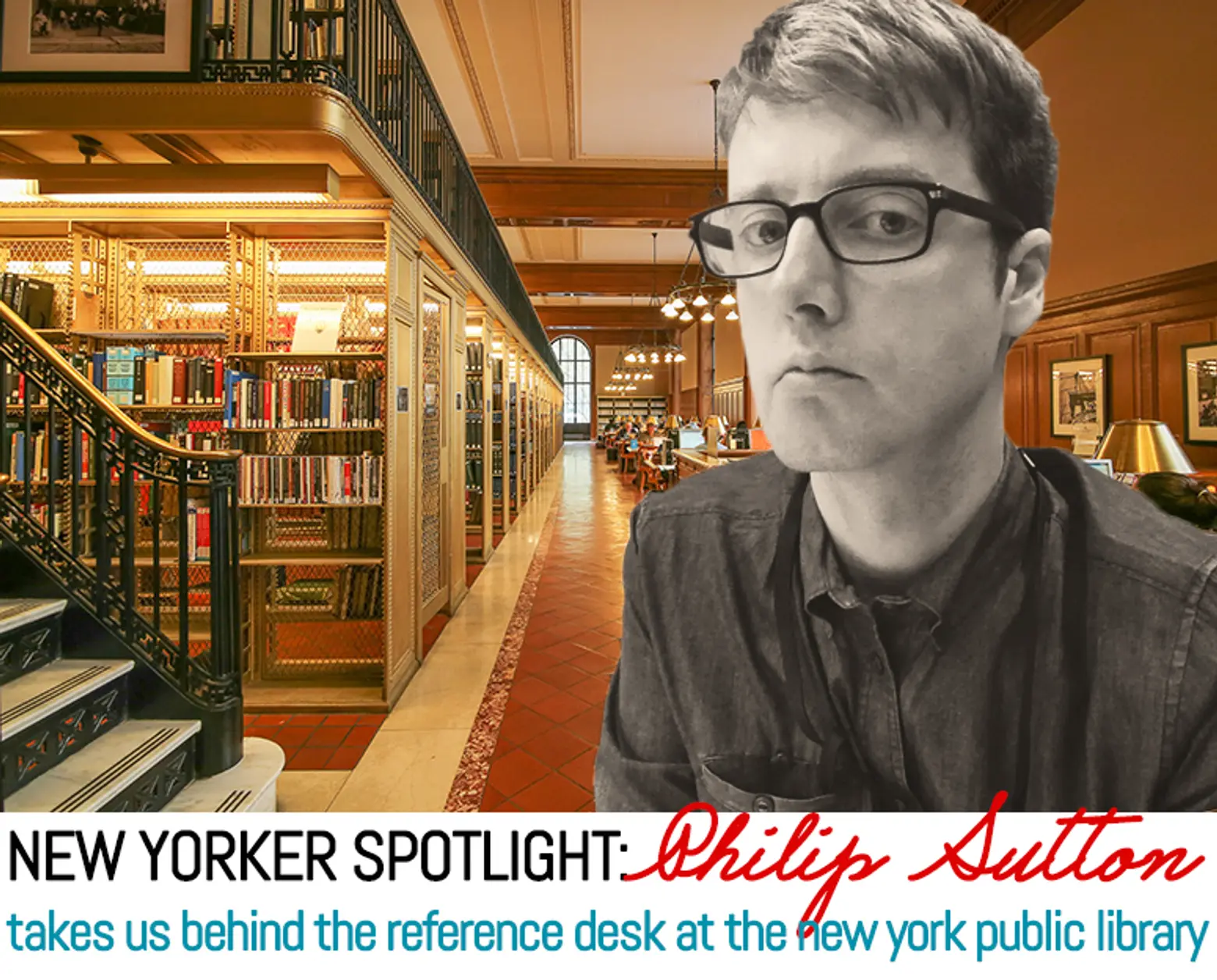
Philip Sutton and the Irma and Paul Milstein Division, via NYPL
Though we’re living in the digital age where we can do a tremendous amount of research online, sometimes we still need the library, and more importantly, the help of an actual person. If you happen to be researching your family or interested in learning the history of a particular building in New York, then perhaps you’ve stopped by the reference desk at the Irma and Paul Milstein Division of United States History, Local History and Genealogy of the New York Public Library and asked librarian Philip Sutton for help.
Philip has worked in the Milstein Division for almost five years as a reference librarian. On a daily basis, he takes the journey with New Yorkers looking to learn more about their city and more often than not, to answer deeply personal questions about their families. It’s a unique position to be in, and one that he takes very seriously. Originally from London, Philip has a particular expertise in helping people conduct research on building history in New York. He writes blog posts on the topic for the library and teaches a bi-monthly course aptly titled, “Who Lives in a House Like This? How to Research the History of Your New York City Home,” during which he instructs New Yorkers how to get started with their research.
We recently spoke to Philip about his role at the library, and, as expected, he was full of helpful resources.
You didn’t originally set out to be a librarian, so how did you become interested in library science?
I was a musician and I worked in retail, and I loved helping people. I kind of wanted a little more out of it and being a reference librarian is great because I have the chance to help people. I was also driven by this idea of when you finish your degree, at the end of the research thing, how can you continue to carry it on? That kind of led me here.
You studied at Pratt, which is renowned for its School of Information and Library Science. Why did you decide to study there?
I had just come to New York from England. I graduated in 2007 with my bachelors from Goldsmiths, an art school in London, and I didn’t know what to do. I knew I was interested in library studies. I was in New York and Pratt was one of two library schools in the area. It was a toss up between the two because I was new to the country. I just picked Pratt because it was in Brooklyn and a little bit nearer to where I lived.
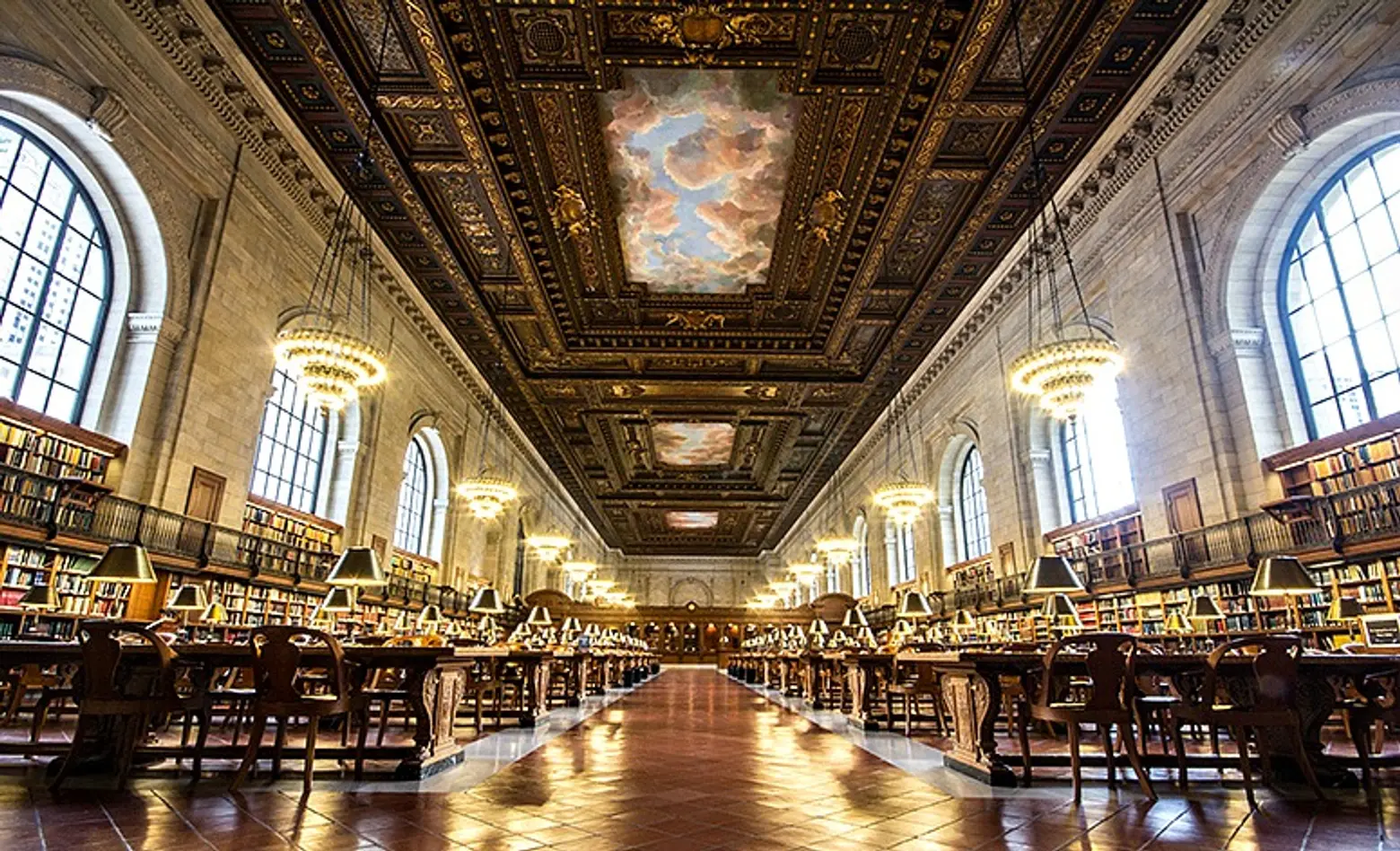
The Rose Reading Room at the NYPL
What do you feel sets the New York Public Library apart from other libraries?
It’s that interesting hybrid of a public library and a research library that makes us unique, I would say. We have research collections that attract a broad sweep of people doing research, from those who are just beginning and interested in researching their family history, to high school students, right up through published scholars and academics.
Can you share a bit about your role in the Milstein Division?
My role in the Milstein Division – and this is true for other librarians here – is primarily about reference. A lot of our patrons are interested in researching their family history, whether they’re beginners or people who are working as genealogists. We also serve a lot of people doing local history research as well as United States research. We have a very busy reference desk. The nature of the reference questions gets quite complex because people are about to get into a research process that is very detailed, and there are a lot of options.
We also do a bit of outreach for different aspects of genealogical research and local and United States History. Most of us give a class. It’s all driven by our patrons’ reference questions at the desk, by telephone, and by post. I have one colleague who works on Irish research. I have another colleague who works on guidebooks and Italian genealogy. I do work on immigration and naturalization and passenger lists and also teach a class on building research.
As librarians, we have come to know our collections very well. I was talking with a colleague who started around the same time as I did about how it takes two to three years to really get to know the collection and how it plays out with other archives in New York.
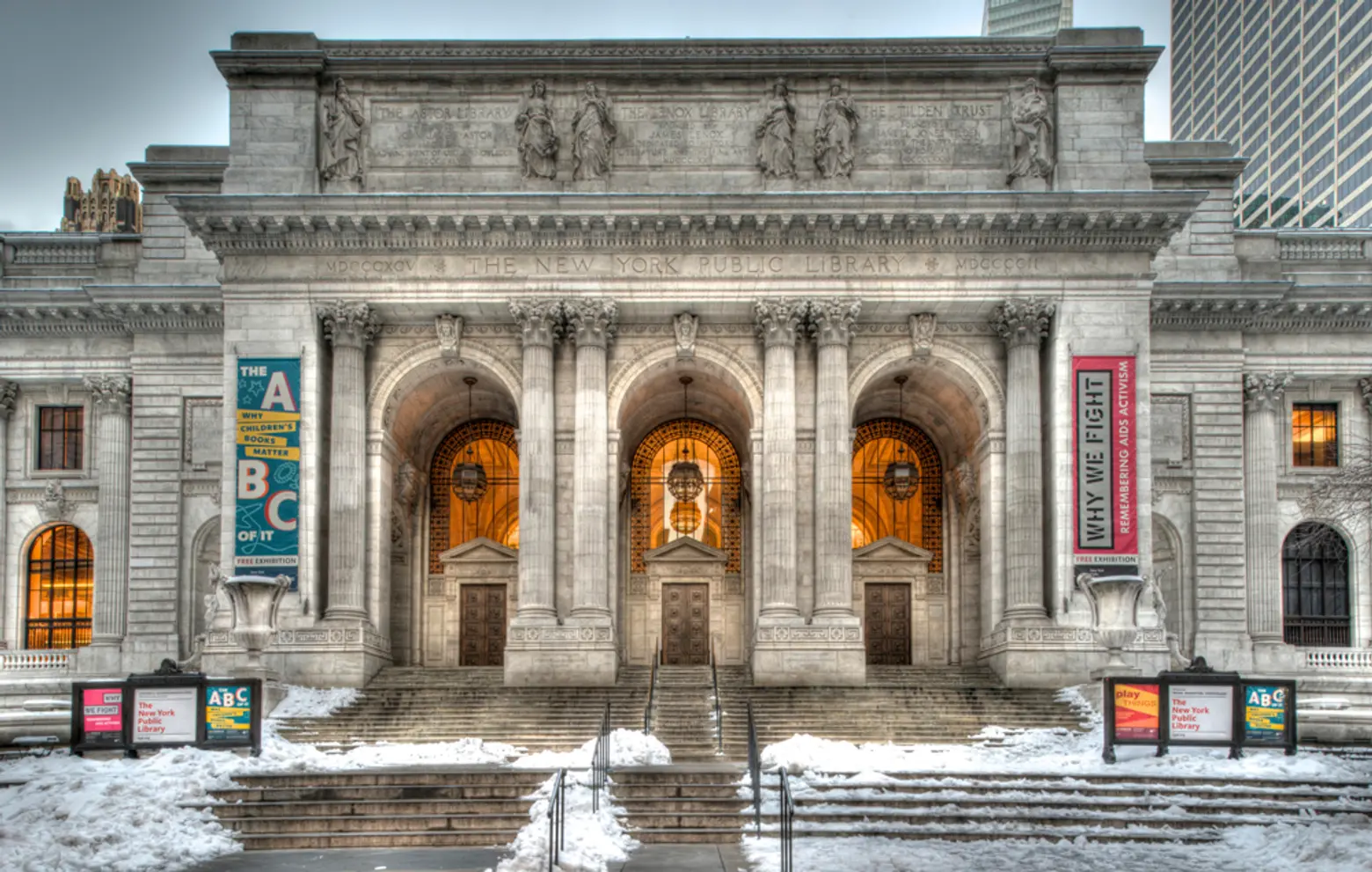 New York Public Library, Stephen A. Schwarzman Building
New York Public Library, Stephen A. Schwarzman Building
Can you give a few examples of questions asked at the reference desk?
The most common statement is, “I want to look up my family,” which essentially means they want to start researching their family history. There is this kind of tried-and-trusted way of starting genealogy research, which is to speak to your family and gather all the information you can, go through any records you can find on marriage or immigration, and then start writing things down. You start building a family tree and then come to the library to look at census and vital records. We give instruction on how to access these materials, and then it’s kind of on from there. After that, it’s more complex questions to do with different aspects. The common problem with genealogy is that a patron’s research will grind to a halt. People can’t find a record and they need help searching alternative indexes or to know where they can find it. We help people navigate not only the research process, but where to find materials.
We also get a lot of high school students who have a research project on topics like the Civil War or Reconstruction. They want to know how to begin, so we’ll help them navigate keyword searches, archives, and databases. The other big area is building history. We have a lot of people who come in with a million different questions pertaining to a building, which is why we do instruction and blog posts.
The Milstein Division has a wealth of resources. What materials does it house?
We have half a million books pertaining to genealogy, local history, and United States History. Curate is the word we use today, and we gather the databases and make people aware of them. We have access to tens and tens of databases including subscription services that you can access in the library for free. We also provide access to subscription newspaper databases. On top of that, we have non-digitized collections of microfilm of New York, city directories, probate records, property deeds, vital records, and indexes. In 2008, the New York Genealogical & Biographical Society (NYG&B) donated their collections to the New York Public Library. The Milstein Division holds the print collections, and most of the manuscript collections and the rest of the manuscripts are in the Archives and Manuscripts Division.
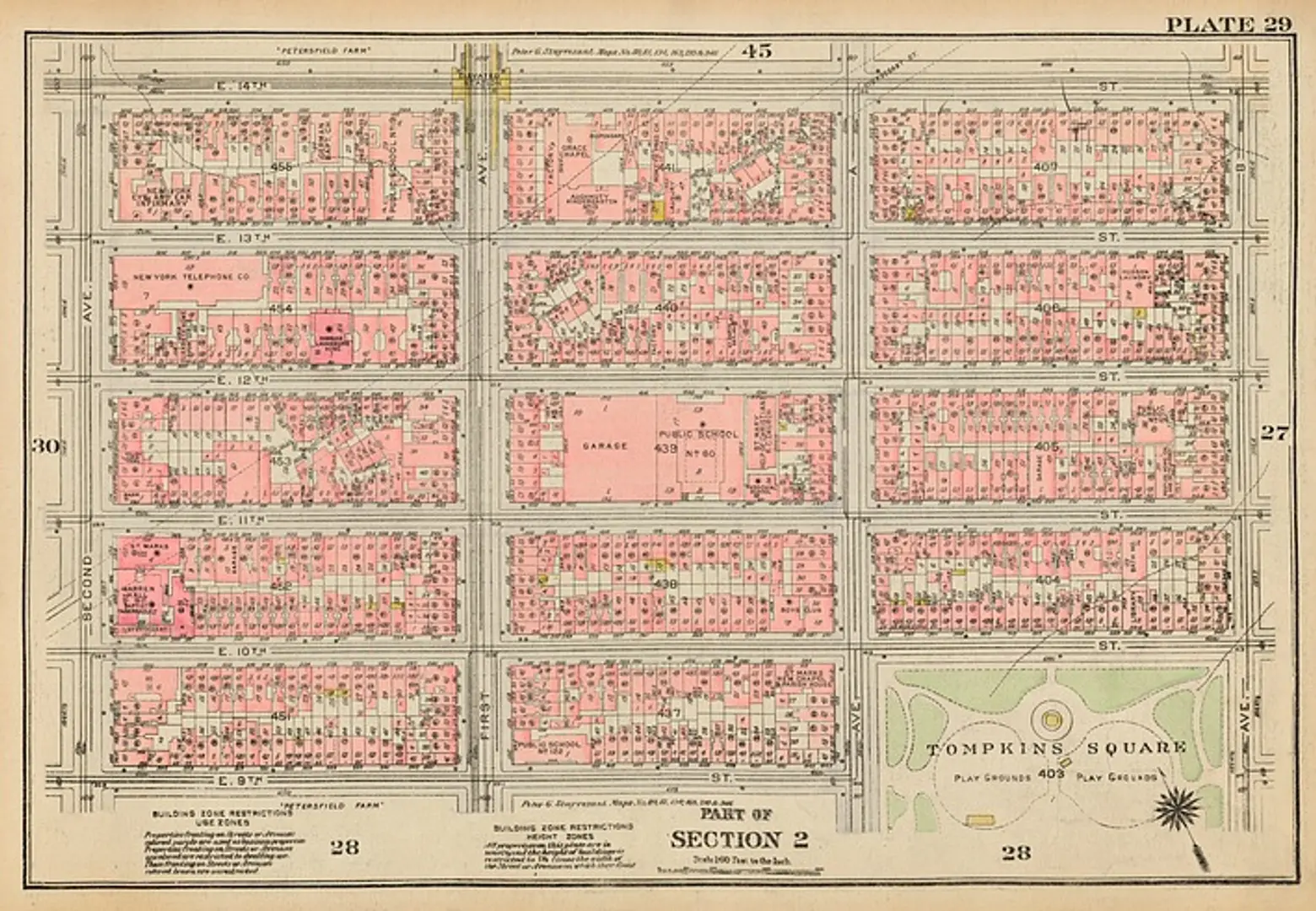
A fire insurance map of the East Village from 1927
As far as materials pertaining to building histories, what does the division have access to?
With buildings it’s all about how do you do the research. There’s the materials we have in hand, as well those elsewhere in New York, for instance at the City Register’s office, the Department of Buildings, and the Municipal Archives. What’s important about us is that we’re the place where you can sit down and research with a whole wealth of materials, and if we don’t have it we’ll tell you where to get it.
In terms of our collections, they’re in divisions: the Map Division and then ourselves. The Map Division has property and real estate maps, especially from the 19th and early 20th centuries. They have fire insurance maps from earlier in that period, which are also very useful and really describe nicely the New York environment.
With the Milstein Division, we’re all about tabulated data. You’re looking at who lived in this building and who owned it. We have city directories from the late 18th century through the mid 1930s. They’re a precursor to the phone book and fantastic with straight indexes with cross streets. This is important because street names and numbers change. There are digitized historical newspapers, which are great for real estate news and stories based around a specific address or buildings. We also have local history materials for researching any of the boroughs or neighborhoods and biographical indexes.
From the late 1920s until the early 1940s, the library was really interested in capturing changing New York. This is something we are getting into again now. A lot of tenement buildings were coming down and various projects were going up, so the library wanted to record the changing face of New York. We have the Lloyd Acker Real Estate Photographs collection, which has a lot of real estate photos from the 1940s through 1970s. There are scrapbooks that are very accessible on microfilm that are arranged by street names. We also have a large collection of auction pamphlets. Additionally, we have a lot of non-digitized real estate photos that we are hoping to digitize shortly. They’re not about canon of photography, they’re more historical records. A lot of people want to see an old photograph of their building for whatever reason – their great-great grandfather lived there or it’s landmarked and they need to do some work on it and want to know what it looked like. Some people want to find out if a celebrity lived there.
What about people researching that ghost in their apartment?
We get a fair few of those questions. When people research building history, they tend to be less into the architectural style or the materials; they’re more interested in people. Who lived there? What did they do? Somebody emailed that they believed somebody was murdered and there was a ghost in the building. They had spoken to a medium who said it was the ghost of a prostitute and the building used to be a brothel. They came to the reference desk and wanted to know all about this brothel and the person who was murdered. So I researched it, but it turned out a bank clerk lived there and there was no brothel. The person who sent in the question decided they were going to believe the medium, but what can you do.
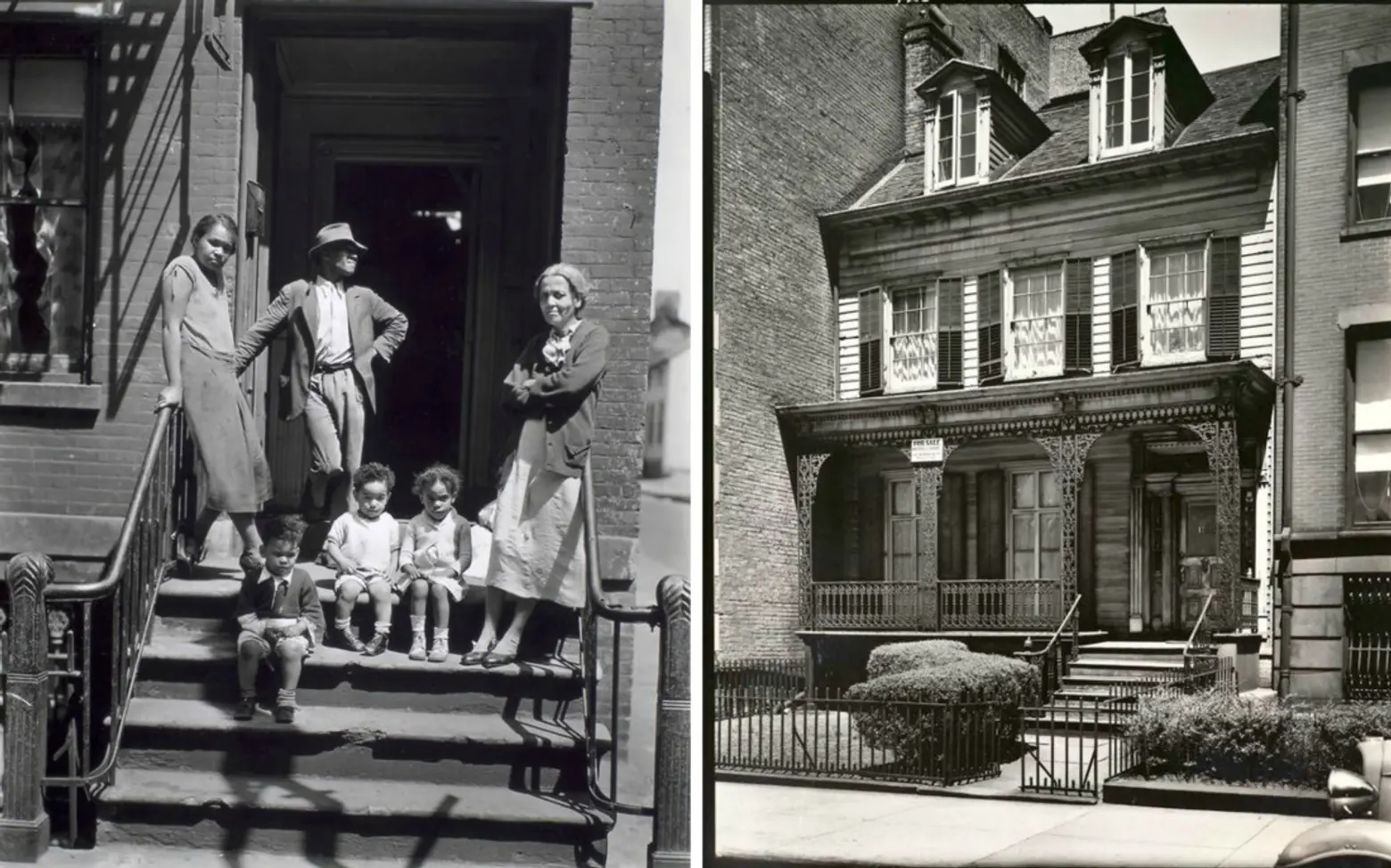
Examples of old building photographs in the NYPL collection
It’s quite interesting that you help people researching United States and New York History yet you are from across the pond. Do you feel a strong connection to America?
I would say America is huge. I come from a country that is smaller than Texas. I definitely feel a connection to New York because I work with city items every day and because I work in genealogy and help patrons with their research.
Is there one item housed in this division that really stands out?
I would say the city directory collection where we have original and digitized directories of New York. Technically, they are divided into different sections. There’s a section that describes various institutions including churches, police stations, government offices, libraries and hospitals. There’s a street section that is really useful for plotting. Then you have the residential section, which has the names of individuals, addresses, business addresses, professions, and even lists of deaths. Then you have the classified section with lots of illustrations. They take the form of all sorts of business cards assembled together on a page. The city directories are really excellent snapshot of a year in a place. They put them together usually between May and July of a specific year because May Day was moving day in New York. So they would wait for everyone to move and then they would go out and canvass for the information.
What does helping New Yorkers conduct research, especially about their families, mean to you?
When I was finishing my degree somebody gave a speech and said, “This is the last time doing this kind of research.” That kind of brought me down a little bit because I was enjoying it. That’s how I ended up in libraries. I didn’t want it to stop. It’s interesting. On a personal level, it’s really rewarding.
The great thing about libraries is that we give people a chance to keep their learning process going. People are curious. People are social. They come to libraries to do this kind of work. A patron comes in and they haven’t been in the library since they were in school. They know there’s something they want to find out about their family, but they don’t really know what they’re doing. It’s our job to make them feel at home – that this is their library. Every now and then this happens to my colleagues and me, and maybe this is because we work in genealogy, but people are really, really grateful that we help. It’s incredibly rewarding. We’ve had people hugging us because of what they discovered. Reference librarians are driven to help people, and we get something out of it too.
***
Irma and Paul Milstein Division of United States History, Local History and Genealogy
Stephen A. Schwarzman Building
Fifth Avenue at 42nd Street
First Floor, Room 121
New York, NY 10018
(212) 930-0828
Interested in taking one of Philip’s classes? The next one is on May 20th.
And read a few of his blog posts here for some research pointers:
- Who Lived in a House Like This? How to Research the History of Your New York City Home
- New York City Land Conveyances 1654-1851: What They Are and How They Work
- Direct Me NYC 1786: A History of City Directories in the United States and New York City
RELATED:
- Is It Possible to Keep an Octopus in a Private Home? And Other Questions Posed to the New York Public Library
- NYC Time Machine Lets Users Navigate Overlaid Maps from 1600 to Present Day
- New Mapping Tool Urban Layers Tracks the Age of Every Building in Manhattan
- Website “WhatWasThere” Lets Users Tour Their Neighborhoods Through Historic Photos
[This interview has been edited]
All images courtesy of the New York Public Library
